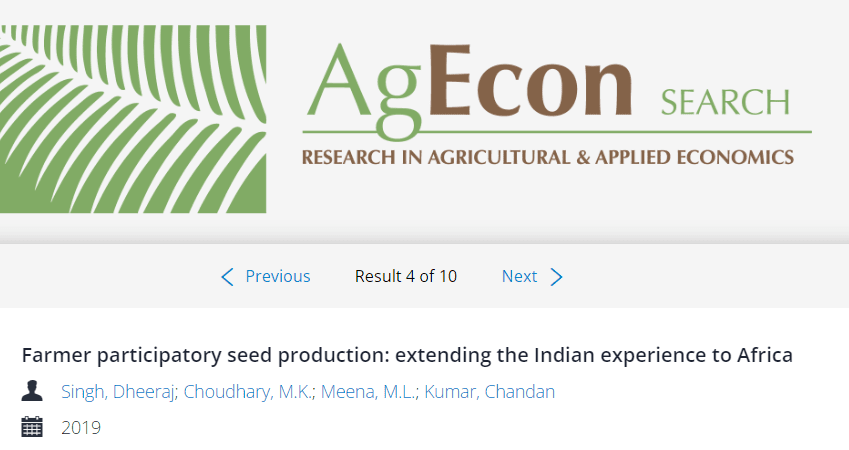Authors: Singh, Dheeraj; Choudhary, M.K.; Meena, M.L.; Kumar, Chandan
Keywords: seed production, participation, Africa, India, adoption
“Quality seed is the key input for realizing potential productivity. In most of the crops, the small and marginal farmers depend on their own farm saved seeds for crop production. Moreover the crops are raised for market and a small portion of the grains are separated, stored and used as seeds in the next season which may not meet the quality aspects as expected for a seed which results in poor field stand, and ultimately low yield. Despite implementation of the organized seed programme, there exists an alarming gap between the demand and supply of quality seeds. The immediate increase in the productivity and production of these crops can be
achieved by a higher distribution of quality seeds of new and high yielding varieties. In this context, the concept of seed village which advocates village self-sufficiency in multiplication and distribution of quality seeds is getting momentum. The paper deals with the concept of participatory seed production at farmer’s level under the guidance of scientist/agriculture department. Case study of seed village programme for different crops and spices in selected villages have been discussed in this paper. Under this, quality seeds of improved varieties of prominent crops of the area were distributed by the Krishi Vigyan Kendra (KVK), CAZRI, Pali to the identified farmers in the area as per annual programme. The farmers used these quality seeds and took their own seed multiplication in operational area which showed a considerable spread of improved variety in nearby villages. Thus there is vast scope to produce and distribute quality seed in most crops for which seed village concept is a novel and highly practical approach and needs to be promoted to facilitate production and timely distribution of quality seeds of desired varieties at village level” […]
Click on the following link to access the content: https://ageconsearch.umn.edu/record/295948?ln=en&v=pdf
© AgEcon

